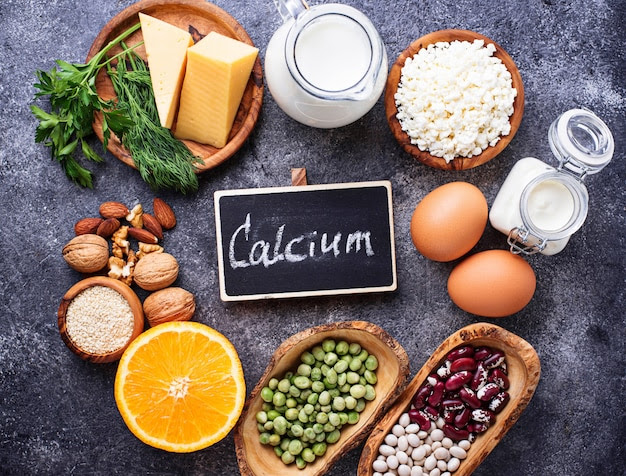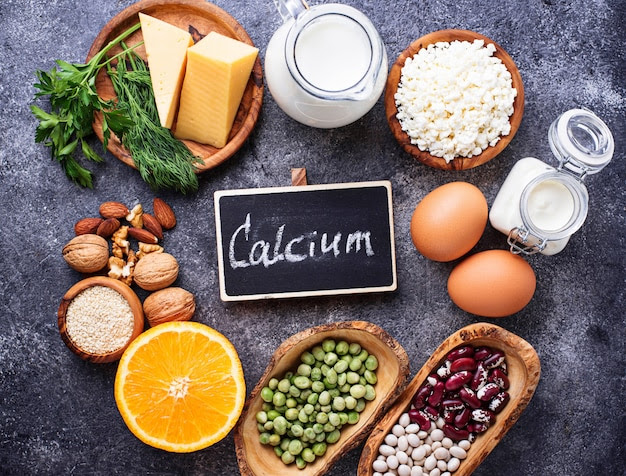
Almost 100% (99%) of the calcium in our bodies is found in our bones and teeth. Still, the remaining one percent does a lot of heavy lifting. Calcium helps our muscles contract and our nerves carry messages from the brain to the rest of the body. And because it mediates the dilatation and constriction of blood vessels, calcium also plays a role in regulating blood pressure. Recent research suggests that the mineral has other benefits, too.
Calcium appears to help prevent esophageal, stomach, and colorectal cancer and it may have a protective effect against other cancers, including breast cancer.
How Much Calcium Do You Need?
The recommended daily allowance (RDA) for calcium depends on your gender and age. The general recommendations are:
- 1,000 mg for women ages 18 to 50 (this includes women who are pregnant or breastfeeding) and men ages 18 to 70
- 1,200 mg for women 51 and older and men 71 and older
As with other nutrients, it’s best to get your calcium from food. (Recent research suggests that calcium from supplements may contribute to blocked arteries). That said, many of us don’t get the amount of calcium we need through our diets.
We all require more calcium as we get older in order to withstand the slow bone loss that naturally occurs with aging. This process happens earlier in women: The decline of estrogen during menopause is associated with lower calcium absorption and faster bone thinning. (Strength training can help combat bone loss.)
If we don’t have enough of the mineral in our blood, our bodies will draw on the calcium “bank” in our skeletons, worsening bone loss and putting us at risk for fractures. People with low bone mass have a condition called osteopenia; those whose bone density is even lower have osteoporosis – with a greater percent of bone loss promoting more porous and fragile bones.
Some people are more likely than others to be calcium deficient. Anyone who avoids dairy products, such as vegans and individuals who are lactose intolerant, may be low in the mineral. If you fall into one of these categories, you may want to talk to your doctor or nutritionist to find out how you can increase your calcium intake from food or if you might benefit from supplements.
Note that there are two forms of calcium supplements: carbonate and citrate. Check to see which one you’re buying – calcium carbonate is more affordable, but calcium citrate is more easily absorbed without food. And keep in mind that it’s also important to get enough vitamin D from food and sunshine because your body uses it to absorb calcium. Many of us need vitamin D supplements, so it’s a good idea to have your levels checked regularly.
What Are Good Sources of Calcium?
Dairy foods are the main source of calcium in our diets, but they’re not the only option. Here are some of our favorite foods that contain plenty of this bone-strengthening mineral:

- Sardines
Serving Size: 4 oz
Amount of Calcium: 495 mg - Nonfat plain yogurt
Serving Size: 1 cup
Amount of Calcium: 450 mg

- Milk
Serving Size: 8 oz
Amount of Calcium: 300 mg - Calcium-fortified juice
Serving Size: 1 cup
Amount of Calcium: 300 mg - Collard greens (cooked)
Serving Size: 1 cup
Amount of Calcium: 266 mg - Canned salmon
Serving Size: 4 oz
Amount of Calcium: 223 mg - Turnip greens (cooked)
Serving Size: 1 cup
Amount of Calcium: 197 mg

- Broccoli
Serving Size: 1 cup
Amount of Calcium: 177 mg - Bok choy (cooked)
Serving Size: 1 cup
Amount of Calcium: 158 mg

- Cottage cheese
Serving Size: 1/2 cup
Amount of Calcium: 155 mg - Tofu, firm
Serving Size: 1/2 cup
Amount of Calcium: 151 mg

- Kale
Serving Size: 1 cup
Amount of Calcium: 94 mg - Almonds
Serving Size: 1 oz
Amount of Calcium: 75 mg
You can find the calcium content of other foods by using the USDA FoodData Central database.
https://www.dietaryguidelines.gov/food-sources-calcium


